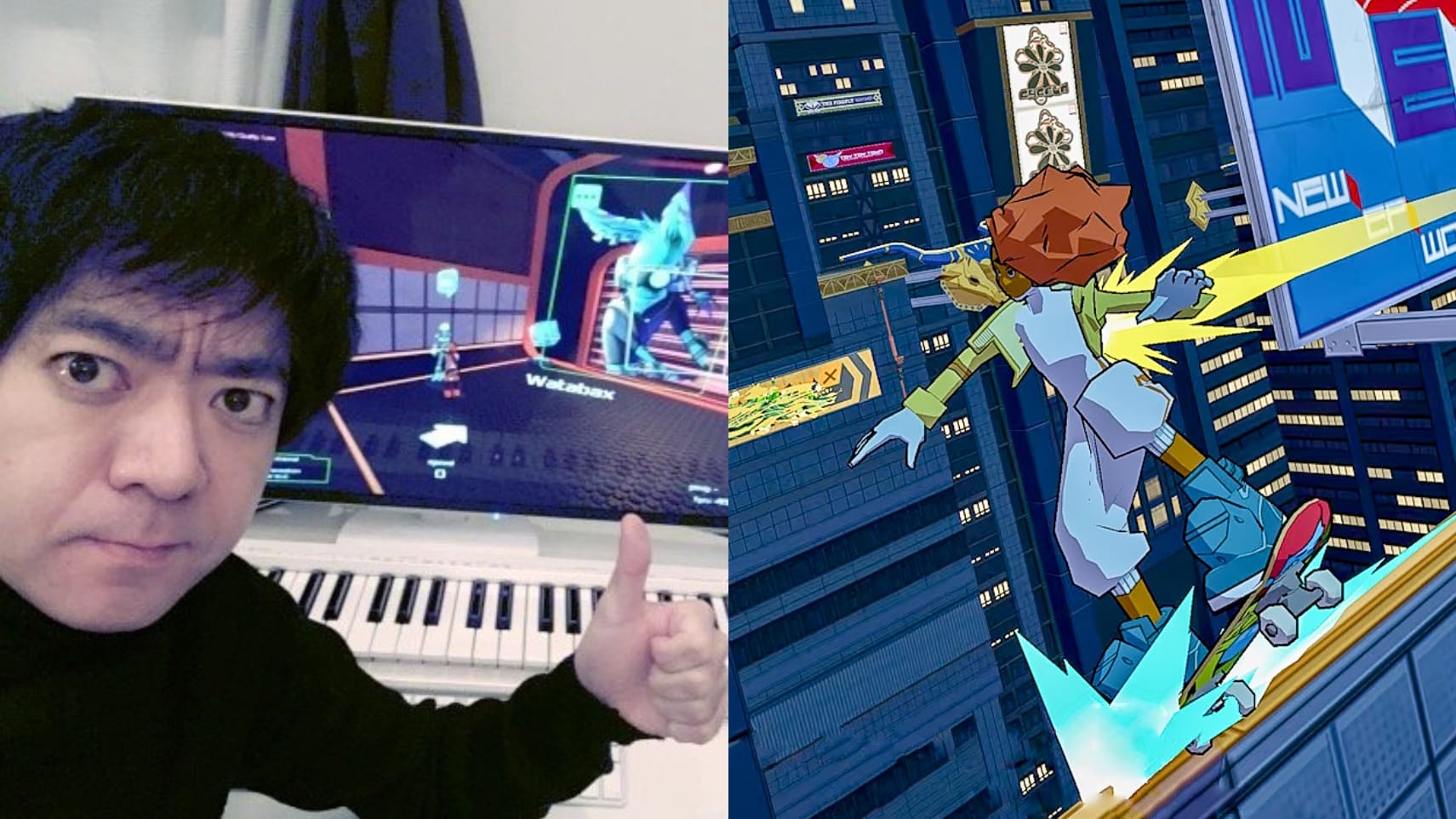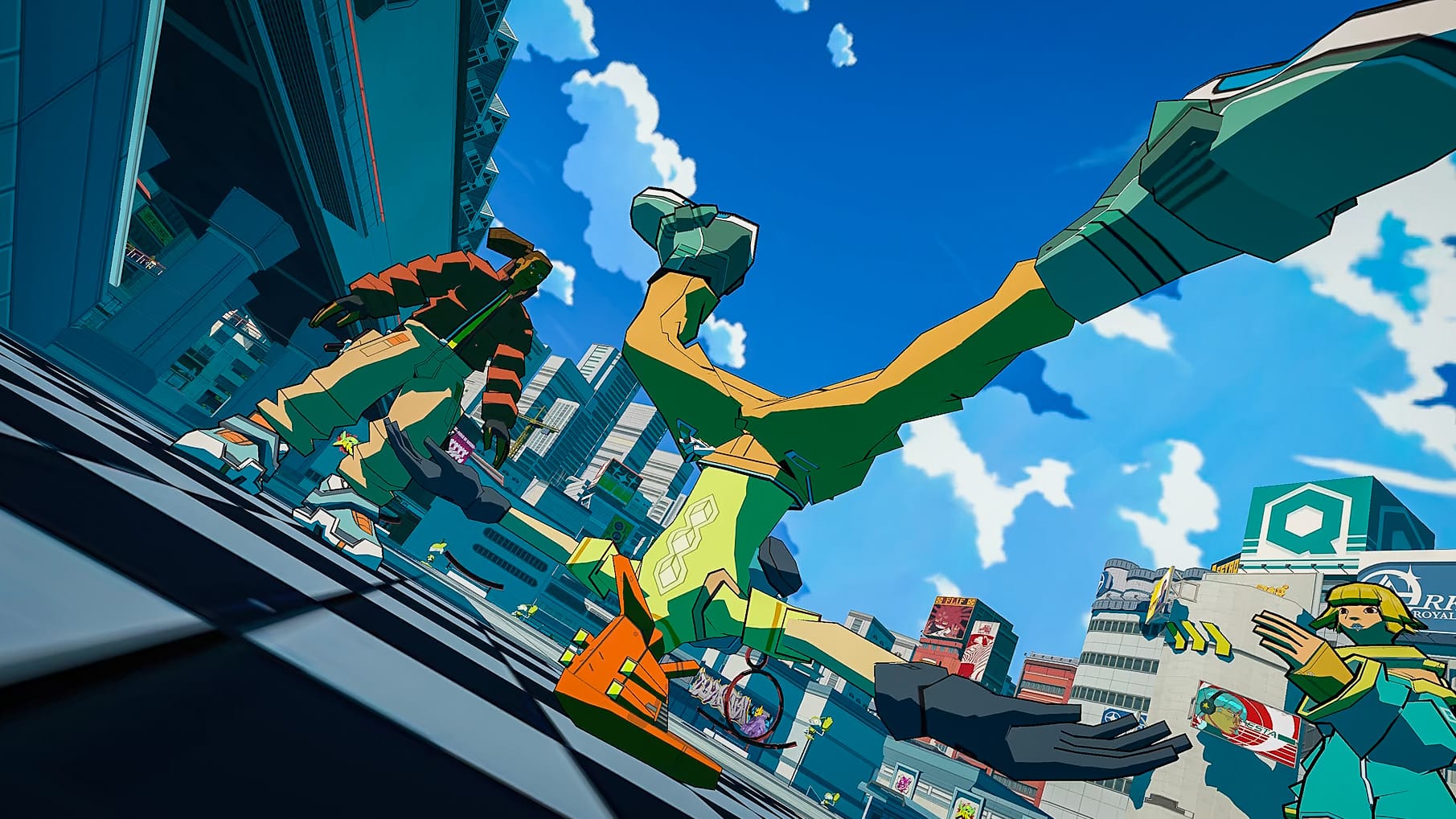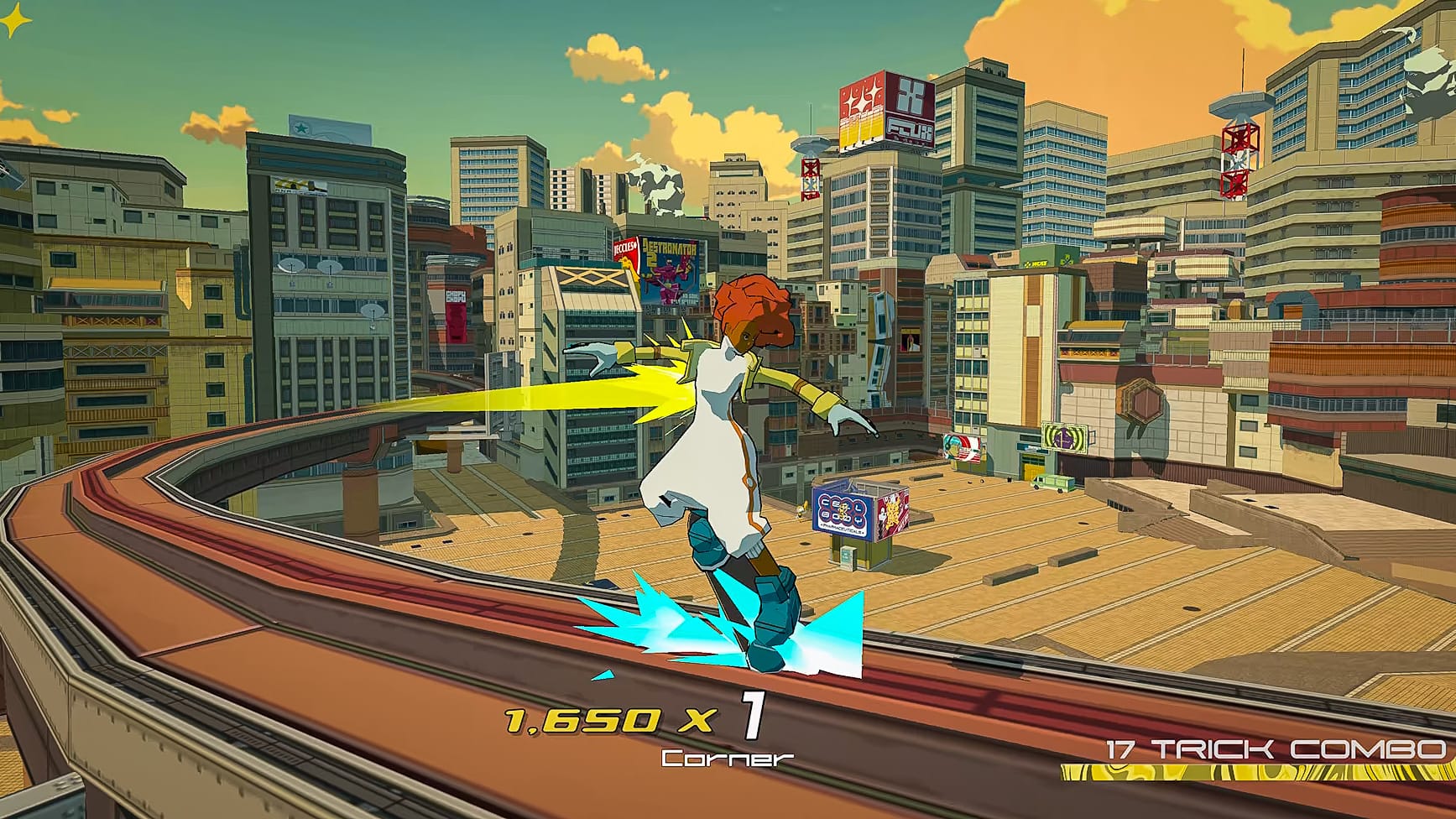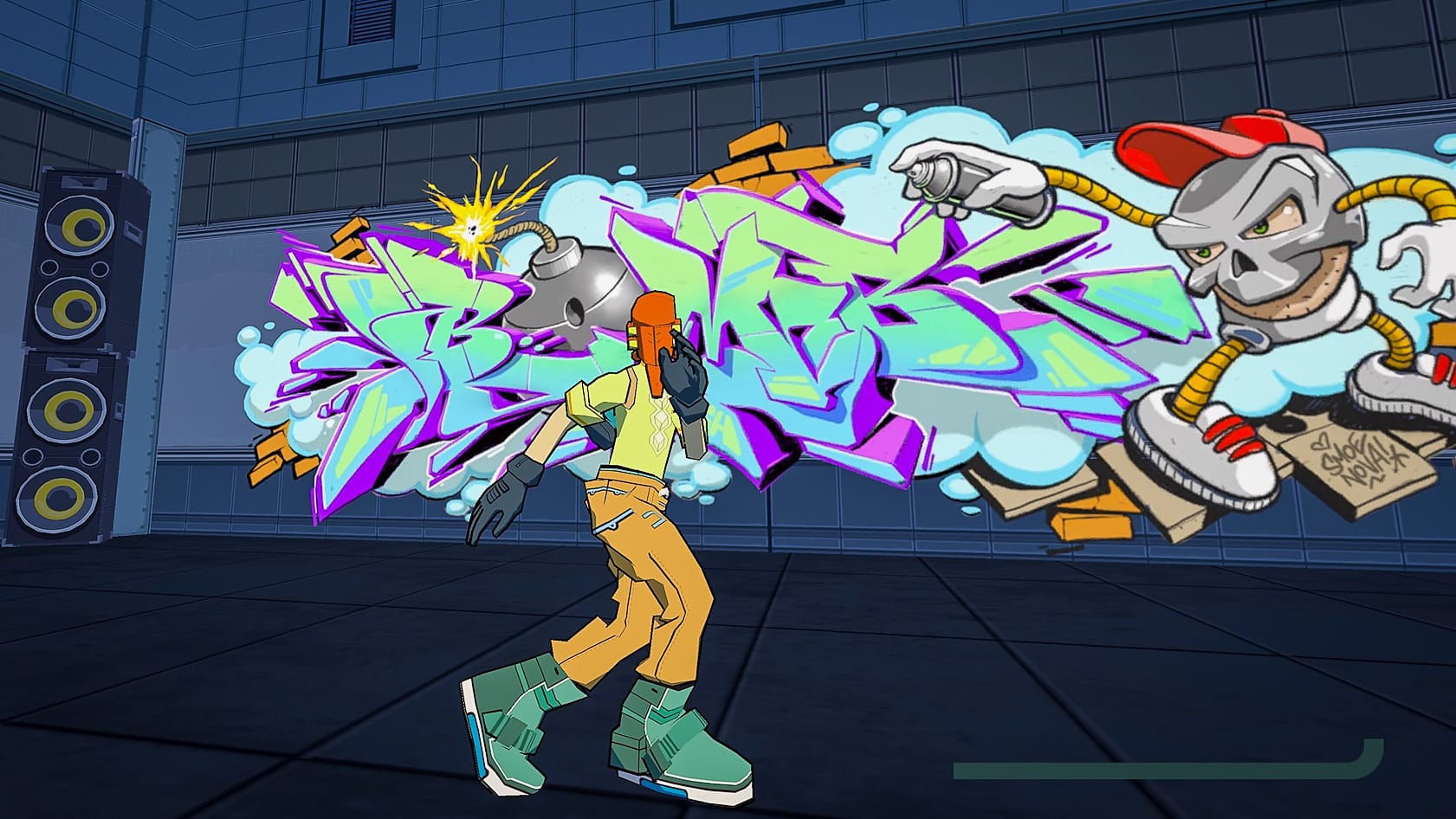Hideki Naganuma: The Funky Uncle of Video Game Music
The twists, turns, and happy accidents that forged the Naganuma sound

You know the sound: elastic basslines, chopped vocals, and breakbeats that can destroy dance floors. That fingerprint powered Sega’s Jet Set Radio and earned Hideki Naganuma the fan nickname “Funky Uncle". But the beats are only half the story; the real hook is how those grooves came to be: equal parts obsession, experimentation, and raw energy.
Naganuma was a self-taught synth-geek who cut his musical teeth as a Tokyo DJ, spending years longing to be a J-pop star and a film composer. After moving to video-game scores, he built a career writing tracks layer-by-layer in his home studio, sample-digging eclectic vinyls in Shinjuku record stores, and even moonlighting on anime soundtracks under the alias “skankfunk". Join me for a tour through the twists, turns, and happy accidents that forged the Naganuma sound.
This article includes musical snippets; click play to hear previews of Hideki Naganuma’s tracks.
A born beat-maker
Born in 1972, Hideki Naganuma didn’t just stumble into music production; he was the kind of kid who spent his pocket money on synthesizers. He started on a Yamaha Electone at five, teaching himself to improvise melodies and rhythms, and by high school was sequencing his own tracks. Idolising multi-talented, do-it-all-yourself artists like Prince and Stevie Wonder, he decided at 14 that music would be his livelihood.
After graduating, Naganuma took an unexpected turn, leaving his native Hokkaido for Tokyo, where he worked as a bartender and DJ at the renowned Blue Note Jazz Club in Aoyama during the 90s. Surrounded by music and steadily building his record collection, he found his other passion - gaming - shaping his ambitions. He soon realized the closest modern counterpart to the cinematic scores he dreamed of writing was video game music.
Armed with a newly launched Saturn and a stack of demo tapes, he sent one to Sega and was “hired with flying colours.” His first assignment wasn’t composing; instead, he worked on voice-editing for the anime Revolutionary Girl Utena before finally landing a chance to write music for Sega Rally 2.

Career liftoff
In 2000, Naganuma hit the big time when Sega tapped him to co-compose the soundtrack for Jet Set Radio, a flagship first-party title for its new Dreamcast console. The game’s bombastic world of graffiti, rollerblades, and infectious beats gave him free rein to blend the funk, hip hop, and electronic styles he loved most.
Composing exclusively on a Mac, he started building tracks with a hook (a bass line, a guitar riff, or a drum groove) and then layered drums, bass, guitar, and synths himself until the track felt right. His signature touch was mixing in film samples and funk-vocal snippets, then slicing and repeating them for a distinctive retro-yet-modern sound with a cinematic twist.
After composing everything digitally in software, Naganuma then mixed it all through an outboard mixer before bouncing it down to a stereo master, carefully sculpting EQ and volume for each channel. A one-man production studio, his skillful 'bedroom producer' approach allowed him to turn around songs quickly and iterate without the pressure (and interference) of a large, expensive studio.
Crafting a sound similar to that championed by French-house meets hip-hop pioneers like Kojak and Cassius, alongside UK big beat heavyweights such as Fatboy Slim, he bottled the forward-looking, optimistic sound of the late 90s and early 2000s and gave it a uniquely Japanese twist.
Paired with the graffiti-splashed walls of Neo-Tokyo, rollerblades slicing through the streets, and bold, hyper-stylised cell-shaded graphics reminiscent of The Designers Republic, his Jet Set Radio tracks exemplified the pre-social media era, when emerging technologies and cyber-inspired fashion seemed to promise a brighter, faster future.
Jet Set Radio and its sequel, Jet Set Radio Future, weren’t just jobs for Naganuma; they were the projects he'd always dreamed of. They were a place where his own musical style was fully realised. In a 2006 interview, he confessed that Jet Set Radio was his most rewarding work because it perfectly blended the demands of the game's soundtrack with exactly what he wanted to do musically.

The Naganuma touch
During his time at Sega, Naganuma composed music for Sega's arcade-only skater Ollie King and the Yakuza franchise, and was eventually tapped to score Sonic Rush, which he nearly passed on, since another composer had already been lined up. A colleague convinced him to take the gig, and he dove in despite having reservations.
Composing for the Nintendo DS meant dealing with severe memory limits, but Naganuma sketched a handful of core tunes and, once Sega approved, cut loose, blending pop, hip hop, ska, and more. His production skills shone through as he crafted some of his most memorable tracks for Sonic Rush, pushing the handheld’s limited audio hardware to its edge. In 2005, his work earned a Golden Joystick nomination for Soundtrack of the Year.
He remembers those days fondly, too, not just for the music but for the small adventures around them. A launch party in Osaka gave him the perfect excuse to head up to Kyoto, exploring the hidden gems of Japan's old capital, and home to Nintendo's HQ. He still views the Sonic Rush soundtrack as some of his best work and encourages newcomers to give it a try on the DS, even just to experience the music as it was intended.
Naganuma’s influences stretch well beyond music too. He’s a lifelong film nerd who once binged Western cinema but now gravitates to Japanese masters like Naruse Mikio and Kinoshita Keisuke. He collects vintage film magazines and crate-digs for '50s R&B and '70s African funk on vinyl, and he’s just as happy watching martial-arts tournaments or Formula One as he is tweaking a bassline.
While Naganuma left Sega in 2008, he never stopped making game music. He continued contributing to Sega titles like Super Monkey Ball 3D, and worked on soundtracks for anime series like Air Gear (loosely inspired by Jet Set Radio) and cult-favourite Gintama, under the alias 'skankfunk' (to avoid any contractual issues).

Future funk pioneer
Naganuma’s sound, fuelled by more than just club beats, draws on cinema, comedy, and his fascination with the mash-up culture of house, hip hop, and electronic music that was exploding in popularity around the turn of the millennium.
That throwback style is now often grouped under the broad banner of Future Funk, a sub-genre that has seen a resurgence in recent years, particularly in retro-inspired video games looking to capture that early 2000s vibe. One developer at the forefront is Netherlands-based Team Reptile, who brought the sound to their titles Lethal League Blaze and Bomb Rush Cyberfunk (and the freshly announced sequel, Hyperfunk).
The Dutch studio hired Naganuma to compose exclusive tracks for their 2023 love letter to Jet Set Radio, and he delivered some of his strongest work yet. The Bomb Rush Cyberfunk OST is a slice of future funk brilliance, showcasing Naganuma at his best. Like a fine wine, this beat pioneer has only grown sharper with age, proving his sound remains as fresh and infectious as ever.
Lovingly dubbed by fans the 'Funky Uncle', Naganuma's beats have kept heads nodding and gamers grinding for more than two decades now, but the real magic is that every track he makes carries a piece of his story. He’s a true artist who spun his passions - movies, vinyl, video games - into soundtracks bursting with inventiveness, securing his place as one of gaming’s most original beatmakers.
